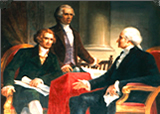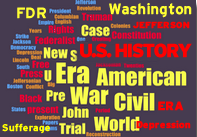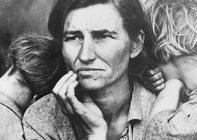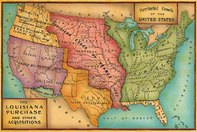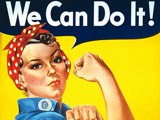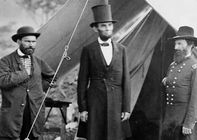|

The Election of 1912
The 1912 presidential election was a race between four leaders (President William H. Taft, former President Theodore Roosevelt, Eugene V. Debs, and Woodrow Wilson) who each found it necessary to distinguish their own brand of progressive reform. The election and its outcome had far reaching social, economic, and political consequences for the nation.
If Men Were Angels: Teaching the Constitution With The Federalist Papers
This lesson explores the Federalist Papers. First, students engage in a discussion about how they get information about current issues. Next, they read a short history of the Federalist Papers and work in small groups to closely examine the text. Then, each small group presents its ideas to the class as a catalyst for further, large-group discussion. Finally, students work in small groups to research a Federalist or Anti-Federalist and role-play this person in a classroom debate on the adoption of the Constitution. Writing activities follow that allow students to use their understanding of the history and significance of the Federalist Papers.
Saved From the Gallows — The Trial of Leopold and Loeb
In 1924 in Chicago, Nathan Leopold, 19, and his friend, Richard Loeb, 18, were tried for the brutal murder of a 14-year-old boy. The prosecutor called it "one of the most cold-blooded, cruel and cowardly crimes ever committed in history." The public called for Leopold and Loeb's execution. But the boys were saved from the gallows by the work of their attorney, Clarence Darrow.
Sam Houston: A Study in Leadership
Sam Houston was a leader who sought practical solutions to the problems of his time. He faced his greatest challenge during his fight against Texas secession from the Union.
The Lincoln-Douglas Debates
In the years leading up to the Civil War, the issue of slavery divided the Democratic Party and newly formed Republican Party. One of the most prominent Democrats was the U.S. Senator from Illinois Stephen Douglas. When he ran for re-election in 1858 against Republican Abraham Lincoln, the two men held a series of debates.
Harriet Tubman and the End of Slavery
Nicknamed the ‘Moses of her people’ for leading runaway slaves to freedom in the north, Harriet Tubman was the most famous member of the Underground Railroad. She became a celebrity in her lifetime and a hero of the Civil War.
|
|
Puritan Massachusetts: Theocracy or Democracy?
In the 1630s, English puritans in Massachusetts bay colony created a self-government that went far beyond what existed in England. Some historians argue that it was a religious government, or theocracy. Others claim it was a democracy.
How the First State Constitutions Helped Build the U.S.
During the American revolution, the former English colonies each adopted their own constitutions. These first state constitutions provided the building blocks for the U. S. Constitution, including the Bill of Rights.
Conservation, Preservation, and the National Parks
The U.S. National Parks system began in the late 19th century. Over time, the rationale for National Parks has expanded from simply maintaining scenery for tourists to restoring original ecosystems.
Rachel Carson and the Modern Environmental Movement
In 1962, American biologist Rachel Carson wrote Silent Spring. Her explosive book revealed to the public the potential dangers of pesticides and also helped spark the modern environmental movement.
The War of 1812: America's First Declared War
The War of 1812 tested whether the new federal republic could survive its first declared war. As Commander-in-Chief, President James Madison had to lead the war effort and deal with antiwar states that challenged his presidential power to wage war.
The Cold War: How Did It Start? How Did It End?
The cold war was a conflict after world war ii between the U.S. and Soviet Union. The superpowers never fought each other, but backed opposite sides in “hot wars,” offered aid to influence neutral countries, and competed in a dangerous nuclear arms race. It lasted 45years, but ended surprisingly fast.
|


